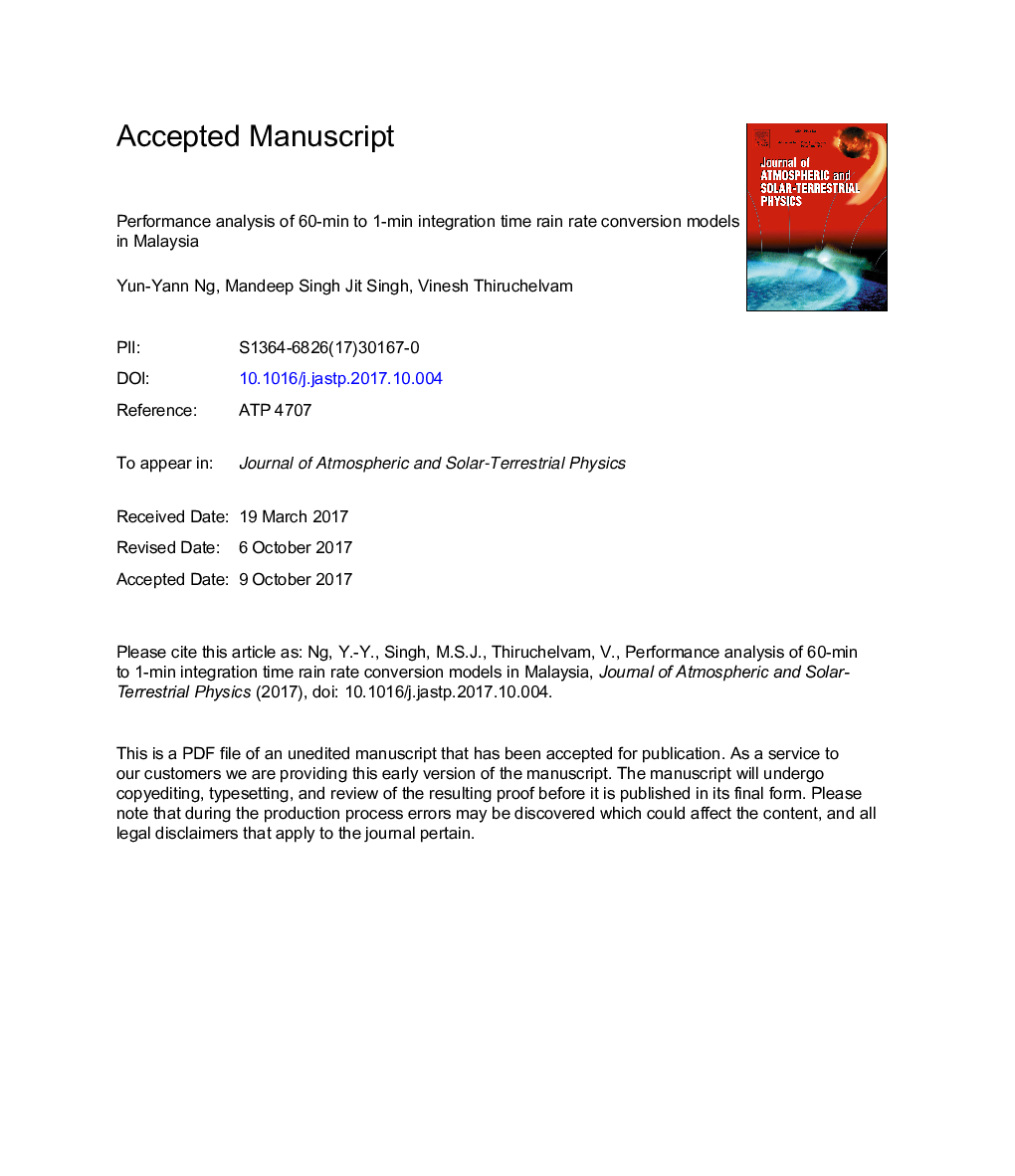| Article ID | Journal | Published Year | Pages | File Type |
|---|---|---|---|---|
| 8139762 | Journal of Atmospheric and Solar-Terrestrial Physics | 2018 | 15 Pages |
Abstract
Utilizing the frequency band above 10 GHz is in focus nowadays as a result of the fast expansion of radio communication systems in Malaysia. However, rain fade is the critical factor in attenuation of signal propagation for frequencies above 10 GHz. Malaysia is located in a tropical and equatorial region with high rain intensity throughout the year, and this study will review rain distribution and evaluate the performance of 60-min to 1-min integration time rain rate conversion methods for Malaysia. Several conversion methods such as Segal, Chebil & Rahman, Burgeono, Emiliani, Lavergnat and Gole (LG), Simplified Moupfouma, Joo et al., fourth order polynomial fit and logarithmic model have been chosen to evaluate the performance to predict 1-min rain rate for 10 sites in Malaysia. After the completion of this research, the results show that Chebil & Rahman model, Lavergnat & Gole model, Fourth order polynomial fit and Logarithmic model have shown the best performances in 60-min to 1-min rain rate conversion over 10 sites. In conclusion, it is proven that there is no single model which can claim to perform the best across 10 sites. By averaging RMSE and SC-RMSE over 10 sites, Chebil and Rahman model is the best method.
Keywords
Related Topics
Physical Sciences and Engineering
Earth and Planetary Sciences
Geophysics
Authors
Yun-Yann Ng, Mandeep Singh Jit Singh, Vinesh Thiruchelvam,
